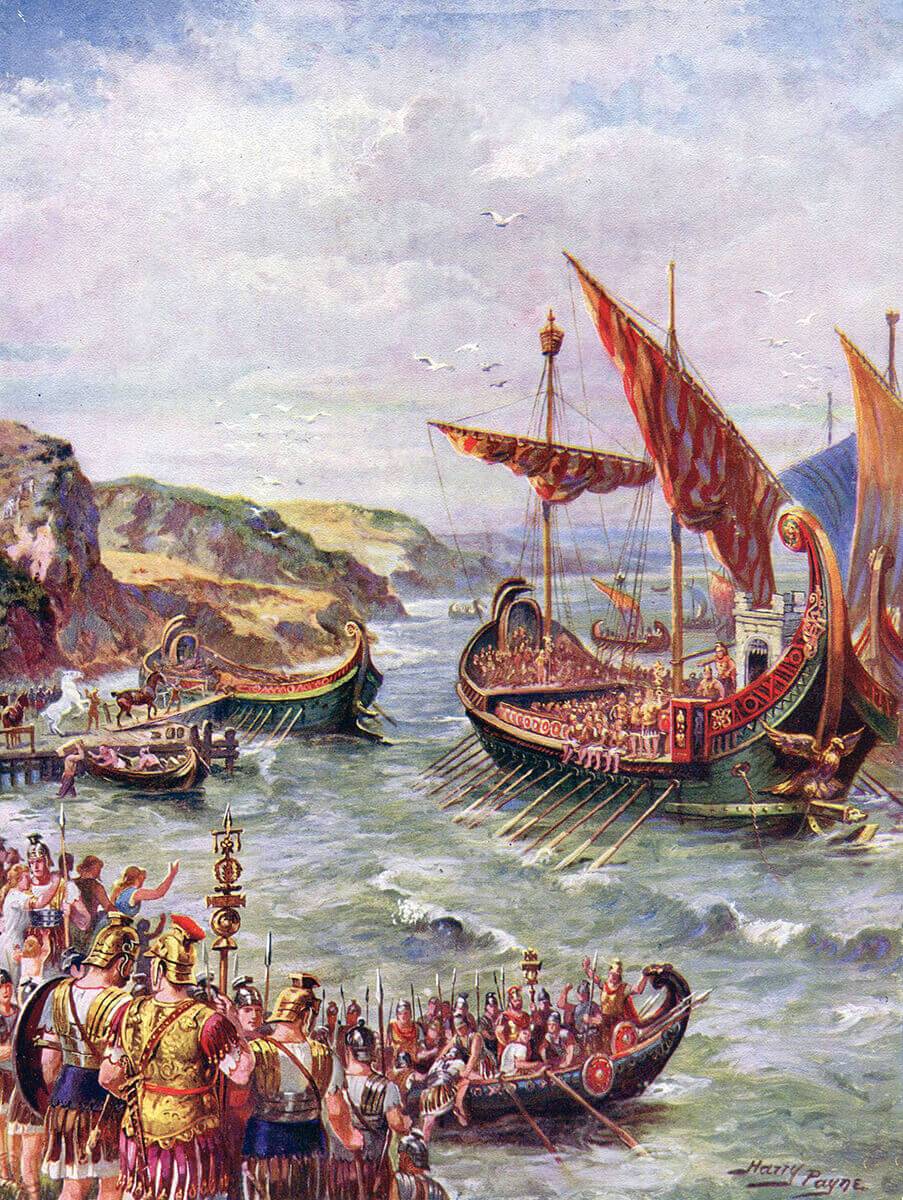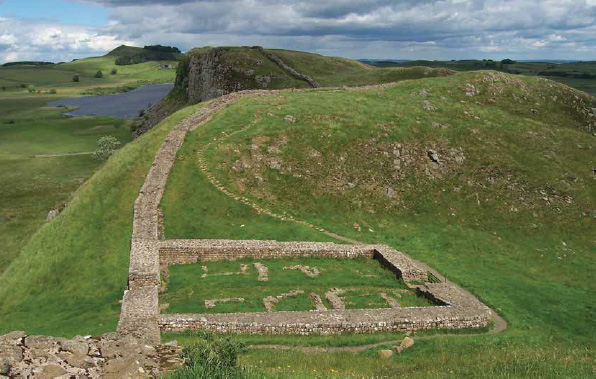How Is the End of Roman Britain Best Explained
The End of Roman Britain Simon Esmonde Cleary considers a little-known anniversary - the death in 388 of an imperial usurper who became a link-man between the factual eclipse of Roman Britain and the legendary world of King Arthur. It was in a fight for survival now.

Roman Army Hledat Googlem Roman Armor Roman History Ancient Warfare
York Archaeological Trust In the year 383 a Roman general in Britain named Magnus Maximus successfully defeated an invasion by the Picts who lived in Scotland but he then weakened the defences of Britain by setting off for Gaul with his troops to try to become emperor.

. Behind the grandeur and splendor of the Roman Empire countless legions lay ready to fight for Senatus Populusque Romanus the Senate and the Roman People. The End of Roman Rule The Romans ruled Britain for nearly 400 years from 43 AD to 410 AD. Despite these victories the Roman Empire was decaying badly.
Reinforcements were sent to Britain and the attacks were repelled. The Roman Empire was being attacked by many different barbarian tribes and soldiers stationed in Britain were recalled to Rome. Did you.
That it was caused by multiple different factors including the constant pressure on other parts of the empire the barbarian conspiracy was a massive factor at the end of roman Britain economic decline which can be shown by the reduction of coin clipping and so on. There were more pressing matters that needed greater attention than the recapture of Britain. It lasted from the overthrow of the Etrusco-Roman king Tarquin the Proud in 509 BC through to around 27 BC when Octavian was first styled Augustus by the Roman senate.
No clear decision to decolonise Britain was made. The end of empire is always messy and Roman Britain was no exception. They left Britain to defend their homeland in Italy which was being threatened by barbarians such as the Goths and the Vandals.
The pagan writer Zosimus tells us that in 409 the pressure of barbarian invaders obliged the British to throw off Roman rule and live independently no longer subject to Roman laws. It was already closely connected with Gaul and when Roman civilization and. With hindsight the decline of Roman influence in Britain could be said to have started with the revolt of Magnus Maximus in AD 383 - not that it was seen that way by those living through that time.
The spread of Christianity in the late Roman and post-Roman period is a key part of the story of the end of Roman Britain. And yet a single seminal event in 107 BC set in train a sequence of events that. The end of Roman rule in Britain was the transition from Roman Britain to post-Roman Britain.
Roman Britain Latin Britannia area of the island of Great Britain that was under Roman rule from the conquest of Claudius in 43 ce to the withdrawal of imperial authority by Honorius in 410 ce. The Roman conquest of northern Gaul 5850 bce brought Britain into definite contact with the Mediterranean. The barbarians had made significant advances into Gaul thereby cutting Britain off from the main body of the empire.
Gold coin of the late Roman rebel emperor Magnus Maximus 383-8. Clues in the poem suggest that it might have been written about Bath. One hundred years later the Roman Empire of the West had vanished and Britain was so cut off from Rome that a subject.
400 Britain was still an integral part of a Roman Empire that embraced the civilized western world and its administrative structure was recorded in a general gazetteer of Roman administration the Notitia Dignitatum. Odoacer considered Romulus so paltry a threat he didnt even bother to assassinate him but sent him. Sub-Roman Britain is the period of late antiquity on the island of Great Britain covering the end of Roman rule in the late 4th and early 5th centuries and its aftermath into the 6th century.
Romans begin to leave Britain. 476 when a so-called barbarian named Odoacer a Germanic leader in the Roman army deposed the last western Roman emperor Romulus Augustulus who was probably partly of Germanic ancestry. Overcoming Etruscans and Samnites in the early days of Rome punishing Carthage at the height of the Republic and subduing Gaul the legions lay ever-ready to conquer on their citys whim.
The term sub-Roman was originally used to describe archaeological remains such as potsherds found in sites of the 5th and 6th centuries and hinted at the decay of locally made wares from a. Around 410 the Romano-Brit. The city of Rome was under attack and the empire was falling apart so the Romans had to leave to take care of matters back home.
Edward Gibbon dated the Fall to September 4 AD. The poem described what had happened to a Roman town during the period of Saxon invasion and settlement. Britain was in a difficult predicament at this time.
The ending of the Roman occupation was Britains first Brexit which probably happened about AD 408-409. The end of Roman Britain About 286 Marcus Aurelius Carausius admiral of the Classis Britannica a well-equipped fleet that secured him command of the English Channel and neighbouring seas quarreled with the central government and proclaimed himself emperor. Britain is cut off from Rome Despite the size of his armies Honorius withdrew garrisons from Britain to fight invasions at the borders of the European provinces.
The class developed ideas about the Saxon impact upon the town by studying a contemporary Saxon poem The Ruin a difficult and challenging text. Roman Britain was attacked by tribal groups of Picts Scots Franks and Saxons. Instead the garrison was run down over a generation and then the remnant.
Lullingstones house-church a room within an otherwise secular building devoted specifically to Christian observance shows that Christianity had certainly reached this villa. While tradition has it that the Roman occupation of Britain ended in AD 410 events surrounding this year need to be seen in the context of longer processes of change and of. Simon Cleary Published in History Today Volume 38 Issue 12 December 1988.
The Roman Republic was one of the longest-lasting most powerful political institutions of the ancient world. In the latter 4th Century more and more field army troops were being taken from Britain to the continent by the various usurpers. The process ended in 409 when the Britons expelled Roman authority from the country.
Thats when the experience of being part of the Roman Empire finished in Britain. There has been considerable dispute about what he meant by this but all the same 409 is now generally regarded as the end of Roman rule in Britain. Roman rule ended in different parts of Britain at different times and under different circumstances.
In 383 the usurper Magnus Maximuswithdrew troops from northern and western Britain probably leaving local warlords in charge. The Western Roman Empire collapsed in 476 AD. This situation continued until it finally came to an end in.
After they left the country fell into chaos.

Battle Of Medway Vespasian And The Roman Conquest Of Southern England

Roman Britain A Brief History Historical Association

Roman Britain Explained In Maps Vivid Maps Roman Britain Roman Province Britain

No comments for "How Is the End of Roman Britain Best Explained"
Post a Comment